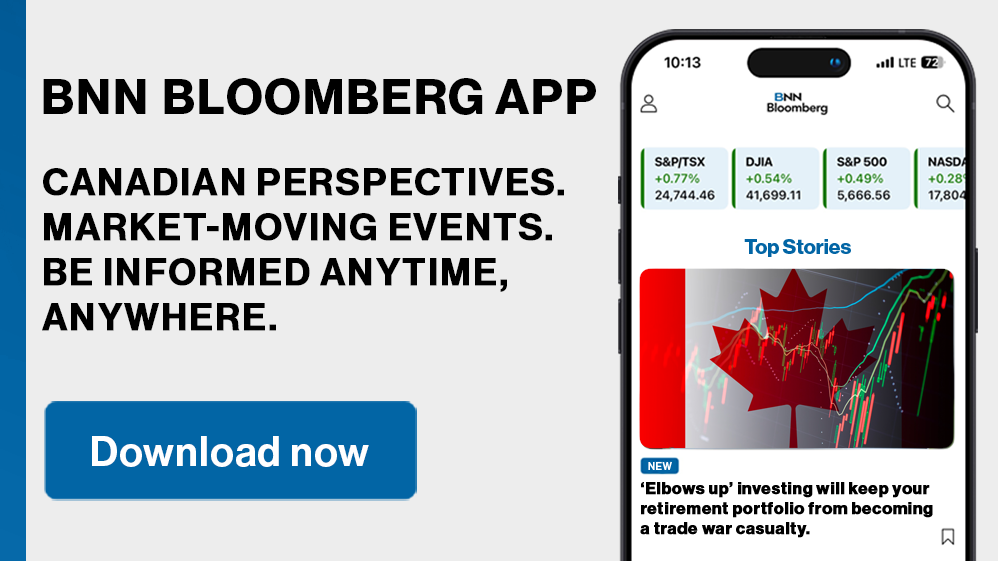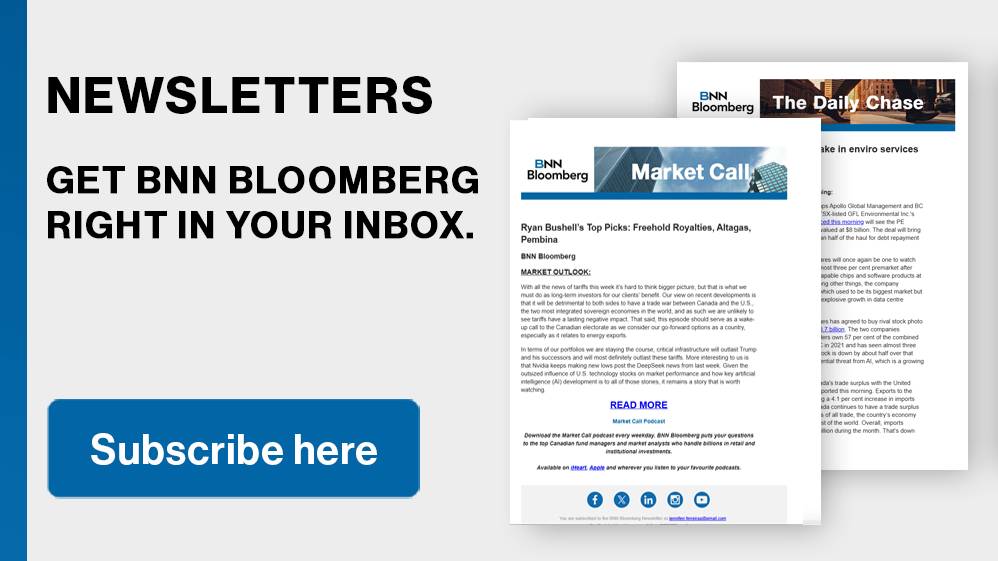More shoppers and companies are embracing the “buy Canadian” sentiment in light of the proposed U.S. tariffs.
The tariffs were set to take effect Tuesday but have been paused for at least 30 days, according to Prime Minister Justin Trudeau in a social media post Monday.
One Reddit user says she cancelled her California vineyard wedding and is now looking at venues in B.C.‘s Okanagan wine region.
Another user said goodbye to Netflix and Disney+ accounts.
From entries on Reddit to posts on social media sites like TikTok, Facebook, Instagram and X, many Canadians have been sharing lists of grocery and clothing stores selling Canadian brands, united in a mission to find ways to boycott U.S. products.
U.S. President Donald Trump announced over the weekend that he would impose 25 per cent tariffs on Canadian products, applied to most goods, and 10 per cent on energy.
For those who want to shop Canadian, here’s some advice that experts and shoppers shared with CTVNews.ca.
What does ‘Buy Canadian’ mean?
Because of the highly-integrated Canadian and American economies, the term “Buy Canadian” doesn’t have a straightforward definition.
Items labelled “Product of Canada” are slightly different from ones with “Made in Canada” claims. The labels aren’t mandatory.
At least 98 per cent of the direct costs of producing or manufacturing the product must have occurred in Canada for the item to be considered a “Product of Canada,” according to the Competition Bureau of Canada. The “Made in Canada” label is applied to products with at least 51 per cent Canadian content.
Dylan Lobo, the digital marketer and owner of Made in CA in Toronto, said “buying Canadian” means that you’re buying a product from a Canadian-owned company or a foreign-owned company that makes items in Canada.
Over the past few days, he says thousands of Canadian product submissions have flooded his inbox. MadeinCA.ca is a website that serves as a resource that compiles and lists products and services made or produced in Canada. The frustration with tariff wars and “unfair practices” of Canada’s other trade partners led to the creation of the website in 2018, which Lobo took over from the founders in 2022.
Another website offering suggestions on where to find Canadian products and services is www.canadianmadeproducts.ca
Diane Brisebois, president and CEO of Retail Council of Canada in Toronto, said products may be partly manufactured, or assembled and packaged, in Canada, but some components may be made in the United States.
“Because we are an integrated economy, there are many products that are sold in Canada that are partly manufactured in the U.S.,” she said in a video interview with CTVNews.ca on Monday.
Brisebois said there are many variations to the meaning of “made in Canada” products, as they may not be 100 per cent made in the country, or produced in Canada.
While many dairy products have the Blue Cow logo showing they are made with 100 per cent Canadian milk and milk ingredients, Lobo said it’s not easy to tell what’s made in Canada because not everything is labelled that way. But he said consumers can be proactive.
Local grocers, butchers, farmers' markets and other smaller businesses tend to have more Canadian products compared to big chains because they have better access to manufacturers in the community, he added.
“If you really want to support local, that’s the best way to do it,” he said in a video interview with CTVNews.ca on Monday. “Your dollar is definitely going to go towards the local economy if you give money to your local business compared to a large chain.”
When you buy something locally, 66 cents of that sale stays within the community where the good is purchased while the amount benefiting the community is only 11 cents if you purchase from an online giant or a big box store, said Dan Kelly, who cited a study done by the Canadian Federation of Independent Business.
The president of the non-profit in Toronto suggests consumers consider shopping at Canadian retailers, buying Canadian brands and finding out if the products are made in Canada.
“Wherever you can, buy Canadian-made goods at Canadian-owned retailers, but I will say that this is a challenge for some small businesses because they do sell a lot of American-made goods,” Kelly said in a video interview with CTVNews.ca on Monday. “So is it better to buy a Canadian-made good at Walmart, a U.S.-based company, or is it better to buy a U.S.-made good at a small Canadian retailer where your dollars stay in that community? That’s going to be a decision that individual Canadians are going to have to make.”
Companies brace for changes
To brace for tariffs, some companies are making changes.
Independent grocers have begun labelling domestic products using shelf signs, said
Giancarlo Trimarchi, president of Vince’s Market, which has four locations in Ontario.
“A lot of our customers were asking us, and they started about a week ago and they really ramped up on Sunday morning, to help them identify Canadian products,” the former chair of the Canadian Federation of Independent Grocers told CTV News Channel on Monday. “They want to know right when they get to the shelf, how to identify those products easily without having to pick them up.”
Canadian grocery chain Loblaw Companies Ltd. announced over the weekend on LinkedIn that it would secure more food grown and made in Canada. In addition, it said it would look to Mexico, which is also facing tariffs.
Canadian e-commerce firm Shopify said it would encourage people to buy Canadian through new features on its Shop app.
Heather Reisman, CEO of Indigo, said in an emailed statement to CTVNews.ca on Monday that the Canadian book retail giant is making it easier to find its Canadian offerings. She said Indigo is highlighting books by Canadian authors and products in its physical stores by featuring them prominently on expanded tables and walls as well as including red Canadian badges on all books by Canadian authors on its website. It’s also looking to expand other Canadian-made offerings, such as stationery and gifts.
“We are proud to be a 100 percent Canadian company – and proud to be citizens of this great country,” Reisman said.
Empire Company Limited, which owns the grocery chain Sobeys, said it will focus on protecting customers as much as possible from the impact of the tariffs. It said it already favours displaying local products in its stores nationwide.
“In light of recent developments, we are working to amplify this very successful local program while also accelerating the sourcing of Canadian products as alternatives to products on the tariff list,” an Empire spokesperson wrote in an email to CTVNews.ca on Monday. “We will be using all of our communication channels, including in-store, to clearly identify Canadian products and give them greater prominence.”
Brisebois of the Retail Council of Canada said that because of the brewing trade war, more suppliers and companies are trying to provide the public with information on whether their products are made or produced in Canada.
Brisebois advises consumers to do their research by looking up the companies' websites and social media platforms behind the products they want to buy.
“It is important for consumers to try to get as much information on what they might be boycotting because there are international suppliers, international retailers who do business in Canada, who sell Canadian goods, or manufacture those goods in Canada,” she said. She gave the example of Kraft Heinz Canada, the U.S.-headquartered company that buys all of its tomatoes to make its ketchup in Canada and produces it in Montreal. “So it’s a bit challenging for consumers.”
Another example is some major global soft drink companies that make their products in Canada, added Kelly of the Canadian Federation of Independent Business.
Shifting travel plans
Brisebois of the Retail Council of Canada said choosing to travel in Canada instead of south of the border would make a “huge difference” since the U.S. is the top tourist destination for Canadians.
“One of the things that Canadians can do when it comes to spending their discretionary dollars is to spend them in Canada,” she said.
Change of mindset
Lobo encourages Canadians with favourite brands to have a change in mindset.
“I’d say at least try a different brand, at least once,” he said. “You might actually like it, and if you don’t like it, you could always go back to what you were buying before. But at least try buying at least one Canadian-made product when you go to stores. I think that’s really important.”
With files from CTV News’ Daniel Otis and The Canadian Press

